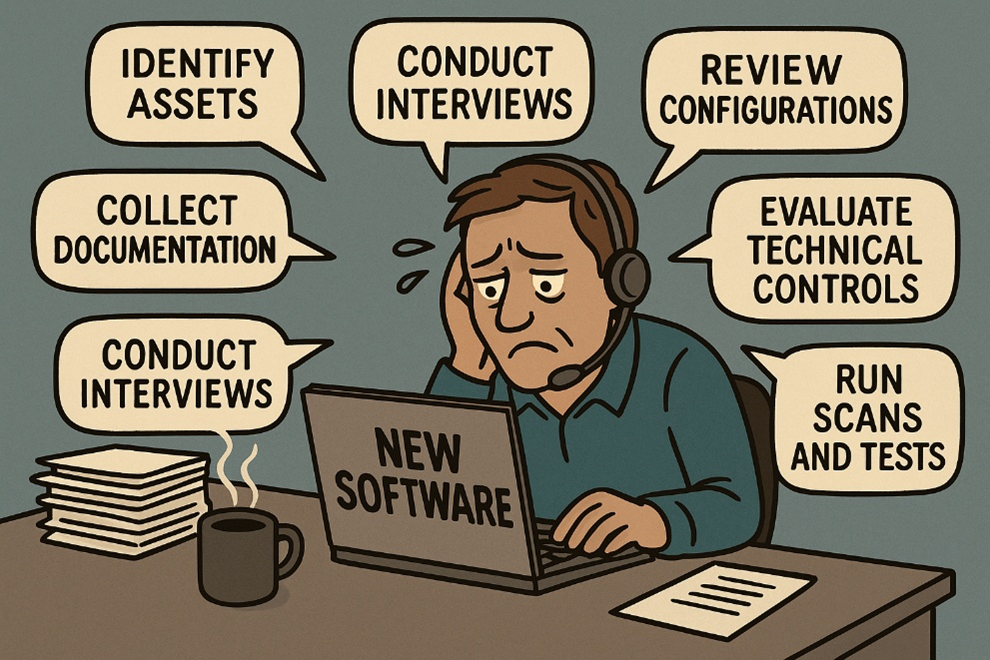Why IT Says “No”—and How You Can Help Them Say “Yes” to the Tools Your Team Needs

Cybersecurity is one of the biggest threats facing businesses and governments today. IT’s top priority is to prevent data breaches and protect the company’s intellectual property and sensitive information. Every new vendor, app, or service introduces potential risk.
So, when a manager discovers a shiny new tool that promises to make their job easier, IT doesn’t just get to say “yes.” They have to vet it—and then monitor it, forever. This is part of Third Party Risk Management (TPRM), a critical but resource-intensive responsibility.
For each new vendor, IT has to perform a detailed and time-consuming review that includes:
- Identifying Assets: What company data will be accessed? What needs to be protected
- Defining Boundaries: Scoping out which systems and processes will be impacted. Every new tool becomes a mini project.
- Collecting Documentation: Gathering and assessing the vendor’s security policies, procedures, and audit reports. Are they credible? Are they up to standard?
- Conducting Interviews: Talking with key personnel to understand how the app works—and where it might break.
- Reviewing Configurations: Checking system settings and access controls for weaknesses.
- Evaluating Technical Controls: Assessing the vendor’s encryption, firewalls, and threat detection.
- Running Scans and Tests: Conducting vulnerability scans and penetration testing to uncover potential threats.
And they don’t just do this once. They do it every year, for every vendor.
They’re like exhausted parents dragging a six-year-old down the sugary cereal aisle: “NOOOOO!!!!! Please, no more!!!”
Can you really blame them?
But Here’s the Irony…
With today’s developer tools and AI platforms, launching a new tech product is easier than ever. Selling it into a company, however? That’s the hard part.
So, how can you help IT say yes—and get the tools your team needs to be more productive?
1. Understand IT’s Priorities
This is internal sales 101: know your audience. Understand that your request adds work to IT’s plate. Show them you respect that process. A little empathy goes a long way.
2. Communicate ROI
You’re not a child begging for Lucky Charms. You’ve found a vetted solution that can improve productivity, reduce costs, and save time. Present your case in business terms:
- What problem does it solve?
- How much time or money will it save?
- What’s the long-term benefit?
3. Start the Vetting for Them
Established vendors will already have the materials IT needs—security policies, compliance documents, pricing models, and integration plans.
Ask the vendor for:
- SOC 2
- ISO 27001
- GDPR
- FEDRAMP
…or whatever certifications are relevant. Provide that to IT along with your request. The more boxes you check for them up front, the better your chances.
4. Internal vs. External File Storage
Some apps store files in the cloud (external), others on your internal servers, and some integrate with platforms like SharePoint.
- External = more risk, as third parties manage company data.
- Internal = more control, but also more IT resources (hardware, software, staff).
Luckily, Shufflrr offers flexible deployment—internal, external, or hybrid—based on client requirements.
5. Think Like IT
You’re trying to make your team more efficient. Help IT do the same. Treat them like internal clients. Anticipate their concerns and arm them with the information they need to approve the vendor.
In Summary:
Yes, IT says “no” a lot—but it’s because they care. Help them get to “yes” by respecting their process, speaking their language, and making their job easier. In the end, you’ll not only get better tools—you’ll build trust and make your whole company smarter and more secure.